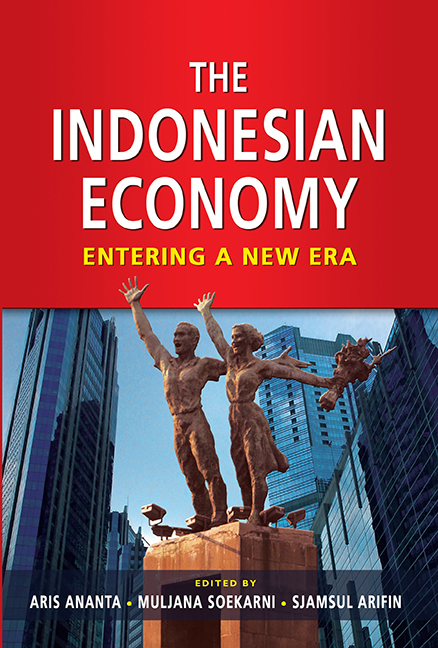Book contents
- Frontmatter
- Contents
- List of Tables
- List of Figures
- Message from the Deputy Governor of Bank Indonesia
- Message from the Director of the Institute of Southeast Asian Studies
- Foreword
- Preface
- Contributors
- PART I INTRODUCTION
- PART II MONETARY AND FISCAL POLICIES
- 3 The Dynamics of Monetary Policy
- 4 The Financial System: Balancing Financial Stability and Economic Growth
- 5 Economic Crisis and Fiscal Policy Management
- 6 Understanding the Role of Fiscal Stimulus in Maintaining Economic Resilience
- PART III DOMESTIC ECONOMY
- PART IV SEARCH FOR NEW PARADIGMS
- Index
5 - Economic Crisis and Fiscal Policy Management
from PART II - MONETARY AND FISCAL POLICIES
Published online by Cambridge University Press: 21 October 2015
- Frontmatter
- Contents
- List of Tables
- List of Figures
- Message from the Deputy Governor of Bank Indonesia
- Message from the Director of the Institute of Southeast Asian Studies
- Foreword
- Preface
- Contributors
- PART I INTRODUCTION
- PART II MONETARY AND FISCAL POLICIES
- 3 The Dynamics of Monetary Policy
- 4 The Financial System: Balancing Financial Stability and Economic Growth
- 5 Economic Crisis and Fiscal Policy Management
- 6 Understanding the Role of Fiscal Stimulus in Maintaining Economic Resilience
- PART III DOMESTIC ECONOMY
- PART IV SEARCH FOR NEW PARADIGMS
- Index
Summary
INTRODUCTION
The year 2008 was marked by a major global financial and economic crisis on an unprecedented scale that had not been seen since the Great Depression of 1929. In the aftermath of the crisis a global recession ensued. This crisis dragged many countries, including Indonesia, into a recession limbo. Export revenues fell dramatically as global demand weakened and consumer confidence hit rock bottom. Financial institutions collapsed, thousands of people became unemployed, and companies went bust. However, even though Indonesia was affected by the negative impact of the crisis, the impact was relatively mild compared with that on many other countries, including ASEAN countries. This was essentially due to the country's relatively low reliance on exports and strong domestic consumption.
To put the brakes on this downward pressure on the economy, several policy measures were introduced. Furthermore, in addition to the active monetary policies pursued by the central bank, the government launched an emergency fiscal stimulus package to stimulate the economy and help it avoid the recession.
This chapter gives an overview of the fiscal policy adjustments during the global economic crisis and provides an evaluation of the measures taken. The next section, Section 2, will start by providing a brief historical synopsis of Indonesian fiscal conditions. Such a synopsis throws light on how the crisis impacted Indonesia's fiscal conditions and also provides a discussion on how the country managed its fiscal policy, and what budgetary problems it faced during the global financial crisis. Section 3 discusses the government budget in detail, starting with government revenue items, the moving on to government expenditure items, and finishing with the government's financing options. Subsequently, Section 4 of this chapter scrutinizes the contents of the Indonesian fiscal stimulus package and provides a brief analysis of the advantages and disadvantages of this package. Section 5 concludes the chapter.
A HISTORICAL OVERVIEW OF INDONESIAN FISCAL CONDITIONS
In late 1960s and early 1970s, the Indonesian economy underwent a fundamental transformation. Soeharto's New Order government at that time took significant actions directed at stabilizing the depressed economy that had been plagued by extreme inflationary pressure. The government thus launched several fiscal and monetary initiatives that were aimed at combating high inflation, opening up the economy to international trade, attracting foreign investors and development, as well as promoting the oil and gas sectors to become major revenue generators.
- Type
- Chapter
- Information
- The Indonesian EconomyEntering a New Era, pp. 132 - 158Publisher: ISEAS–Yusof Ishak InstitutePrint publication year: 2011

